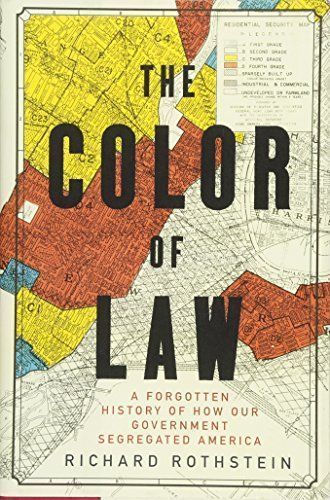
The Color of Law A Forgotten History of How Our Government Segregated America
Lauded by Ta-Nehisi Coates for his "brilliant" and "fine understanding of the machinery of government policy" (The Atlantic), Richard Rothstein has painstakingly documented how American cities, from San Francisco to Boston, became so racially divided. Rothstein describes how federal, state, and local governments systematically imposed residential segregation: with undisguised racial zoning, public housing that purposefully segregated previously mixed communities, subsidies for builders to create whites-only suburbs, tax exemptions for institutions that enforced segregation, and support for violent resistance to African Americans in white neighborhoods. He demonstrates that such policies still influence tragedies in places like Ferguson and Baltimore. Scholars have separately described many of these policies, but until now, no author has brought them together to explode the myth of de facto segregation arising from private prejudice or the unintended consequences of economic forces. Like The New Jim Crow, Rothstein's groundbreaking history forces us to face the obligation to remedy our unconstitutional past.
National Book Award Nominee for Nonfiction (2017)
California Book Award for Nonfiction (Gold) (2017)
Los Angeles Times Book Prize Nominee for History (2017)
Brooklyn Public Library Literary Prize for Nonfiction (2017)
Reviews
Andrew Reeves@awreeves
Molly M@molsmcq
Andrew Louis@hyfen
Kristen Claiborn@kristenc
Megan Snodgrass@snodingham
Jayme Bosio@jaymeb
Cindy Lieberman@chicindy
Madelynn snobl@msnobl
Max Bodach@maxbodach
Amy Maddess@amymaddess
Madison Pangburn@mjpangburn
Sahi K@sahibooknerd
Ruby Huber@rubyread
Courtney Wise@courtneyw
b.andherbooks@bandherbooks
Christian Beck@cmbeck
Andrew Marti@amarti
Vanessa Bintou@nessieb
miya@liliaceae
Julia Rivera@jriver23
Kiara@bookwormenglishteacher
iamazoo@iamazoo
Beth uno@gmuir
Jacque@jacque_who